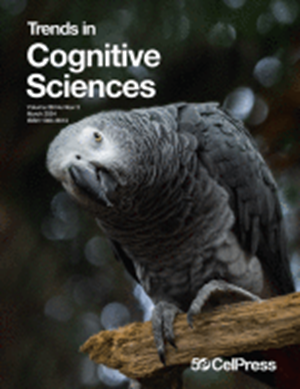Context, not grammar, is key to structural priming
IF 17.2
1区 心理学
Q1 BEHAVIORAL SCIENCES
引用次数: 0
Abstract
Structural priming – a change in processing after repeated exposure to a syntactic structure – has been put forward as evidence for the psychological reality of constituent structures derived from grammar. However, converging evidence from memory research, large language models (LLMs), and structural priming itself challenges the validity of mapping structural representations onto grammatical constituents and demonstrates structural priming in the absence of such structure. Instead of autonomous representations specified by grammar, we propose that contextual representations emerging from multiple constraints (e.g., words, prosody, gesture) underlie structural priming. This perspective accounts for existing anomalous findings, is supported by the strong dependence on lexical cues observed in structural priming, and suggests that future research should prioritize studying linguistic representations in more naturalistic contexts.语境,而不是语法,才是结构启动的关键
结构启动——在反复接触句法结构后的处理变化——已被提出作为语法衍生的组成结构的心理真实性的证据。然而,来自记忆研究、大型语言模型(llm)和结构启动本身的证据对将结构表征映射到语法成分的有效性提出了挑战,并证明了在没有这种结构的情况下结构启动。与语法指定的自主表征不同,我们提出来自多个约束(例如,单词、韵律、手势)的上下文表征是结构启动的基础。这一观点解释了现有的异常发现,并得到了结构启动中观察到的对词汇线索的强烈依赖的支持,并建议未来的研究应优先考虑在更自然的语境中研究语言表征。
本文章由计算机程序翻译,如有差异,请以英文原文为准。
求助全文
约1分钟内获得全文
求助全文
来源期刊

Trends in Cognitive Sciences
医学-行为科学
CiteScore
27.90
自引率
1.50%
发文量
156
审稿时长
6-12 weeks
期刊介绍:
Essential reading for those working directly in the cognitive sciences or in related specialist areas, Trends in Cognitive Sciences provides an instant overview of current thinking for scientists, students and teachers who want to keep up with the latest developments in the cognitive sciences. The journal brings together research in psychology, artificial intelligence, linguistics, philosophy, computer science and neuroscience. Trends in Cognitive Sciences provides a platform for the interaction of these disciplines and the evolution of cognitive science as an independent field of study.
 求助内容:
求助内容: 应助结果提醒方式:
应助结果提醒方式:


